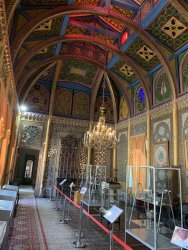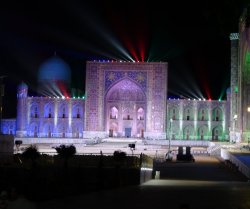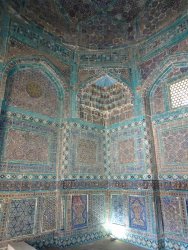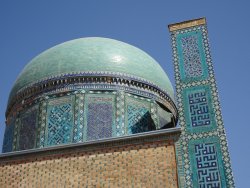- Joined
- Nov 12, 2012
- Posts
- 29,025
- Qantas
- Platinum
- Virgin
- Platinum
- Star Alliance
- Gold
Back to our drive from Bukhara to Samarkand, about 270km, but which would take about 5 hrs driving because the road is atrocious. Rough!
On the outskirts of Bukhara is the Emir's summer palace, built about 100 years ago. As in Turkey, the rulers were liking the European architecture, and the Emir of Bukhara had had schooling in Russia, so the style is very Russian but with Islamic flourishes.
There are a seriues of buildings - the palace, a guests's lodge and a harem, spread over a few acres. None of the buildings are 'grand' in the European style.


Reception hall:


A row of enfilade rooms, just like you'd see in any of the Tsar's palaces (but at a much more modest scale )
)

The following pics are of the ceiling and wall decoration.



Meet the family ...

Women wore these horrid, heavy burkas until the Soviets outlawed them.

On the outskirts of Bukhara is the Emir's summer palace, built about 100 years ago. As in Turkey, the rulers were liking the European architecture, and the Emir of Bukhara had had schooling in Russia, so the style is very Russian but with Islamic flourishes.
There are a seriues of buildings - the palace, a guests's lodge and a harem, spread over a few acres. None of the buildings are 'grand' in the European style.


Reception hall:


A row of enfilade rooms, just like you'd see in any of the Tsar's palaces (but at a much more modest scale

The following pics are of the ceiling and wall decoration.



Meet the family ...

Women wore these horrid, heavy burkas until the Soviets outlawed them.






















































































